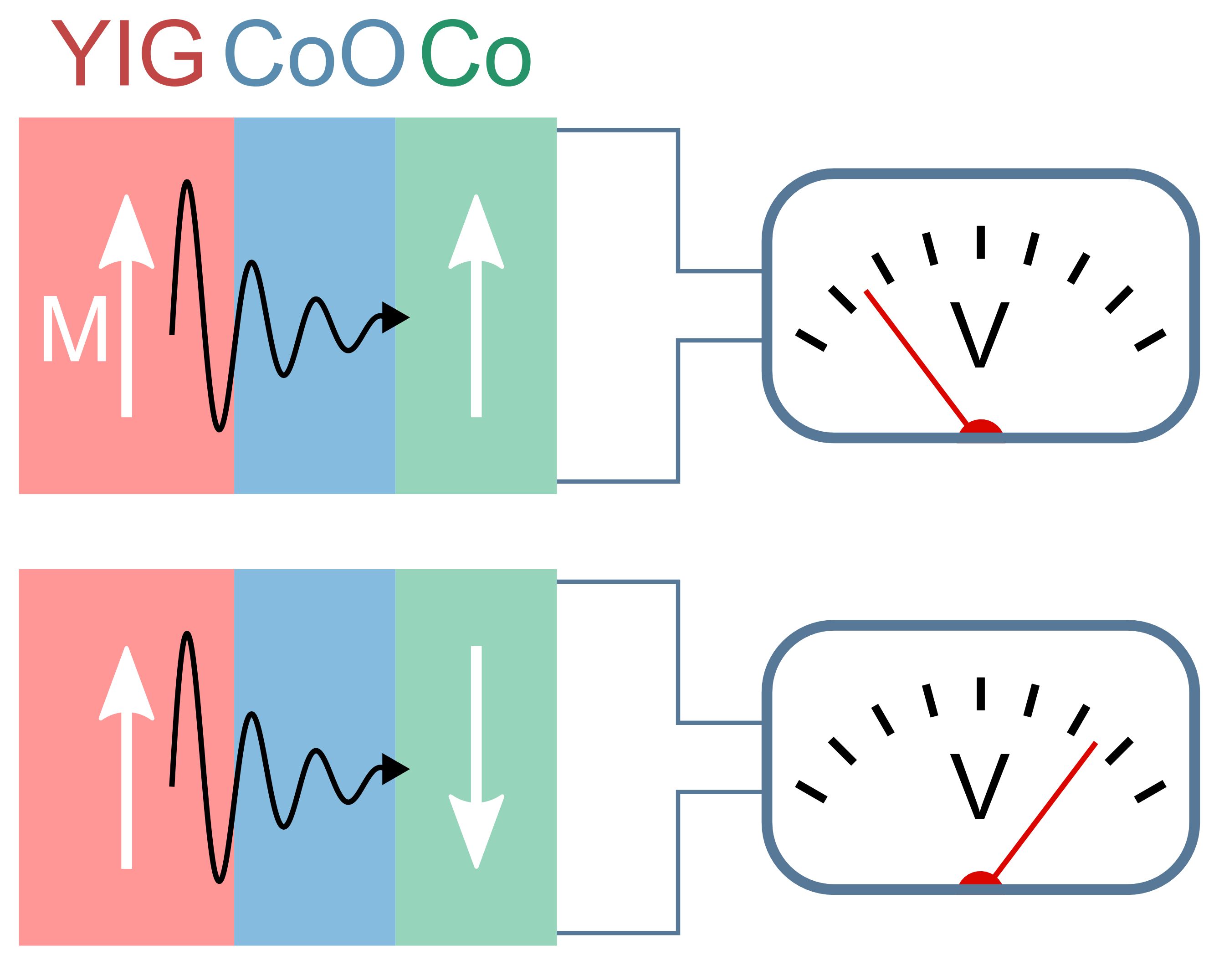
Information carrier of the future
International project cooperation with participation from Konstanz shows: magnon currents as basic information carriers can be controlled via spin valve structures
The emerging research field of magnon spintronics investigates how magnon spin currents can be used to transmit and process information. In contrast to electrical currents, on which today's established information technology is based, magnon spin currents do not transfer electric charge, but magnetic moments. This happens through magnetic waves, the magnons, which spread, similar to sound waves, through magnetic materials.
An essential component of magnon spintronics is the magnon logic, which, for example, makes it possible to carry out logical operations, and thus information processing, through superposition of spin currents. An international team of physicists from the University of Konstanz, the Johannes Gutenberg University of Mainz and the Tohoku University in Sendai (Japan) now succeeded in adding another component to the magnon logic kit. The scientists employed a spin-valve structure and were able to control magnon currents using the magnetic configuration of the valve like a microscopic switch. This allows, in principle, the transmission or suppression of incoming information. The research findings were published in the current issue of the online journal Nature Communications.
The teams of Professor Ulrich Nowak from the University of Konstanz and Professor Mathias Kläui, former member of the University of Konstanz's Zukunftskolleg, now professor at the University of Mainz, jointly developed the idea for the study. The two working groups have successfully carried out joint projects for many years. The team of Professor Eiji Saitoh, PhD, at the Tohoku University in Sendai provided the apparatus for setting up the three-layer system of the spin-valve structure, and the experiments were carried out there.
Magnon spintronics is set on replacing electric charge with magnons as the basic information carrier. Magnons offer the possibility of "wave-based computing", which provides more options for logical data processing than conventional electronics. What's more, magnons move in magnetic insulators with comparatively little losses, promising a way to energy-efficient data processing.
It could be shown in the experiment that the strength of the detected signal depends to a large extent on the magnetic configuration of the spin valve. This spin valve structure is a three-layer system: An anti-parallel arrangement of the magnetization of the electrically insulating ferromagnet yttrium-iron-garnet and the metallic ferromagnet cobalt – with the insulating antiferromagnet cobalt(II) oxide in between – results in a signal that is about 120 percent larger than in the parallel state. Switching the metallic ferromagnet numerous times showed that the effect is stable, making long-term operations feasible. This effect could be applied in future, potential magnon-logic operations and will thus significantly contribute to magnon spintronics.
The project cooperation was funded in the context of the DFG Priority Program "Spin Caloric Transport". Ulrich Nowak carried out his research also with support from the University of Konstanz's Collaborative Research Centre "Controlled Nanosystems: Interaction and Interfacing to the Macroscale" (SFB 767).
Facts:
- Study on the controllability of magnon currents as basic information carrier
- Project cooperation of the Universities of Konstanz, Mainz and Tohoku (Japan)
- Financial support through the DFG Priority Program "Spin Caloric Transport" and the Konstanz Collaborative Research Centre "Controlled Nanosystems: Interaction and Interfacing to the Macroscale" (SFB 767).
Original publication:
Joel Cramer et al.: Magnon detection using a ferroic collinear multilayer spin valve. Nature Communications, 14 March 2018. DOI: 10.1038/s41467-018-03485-5.
https://www.nature.com/articles/s41467-018-03485-5
